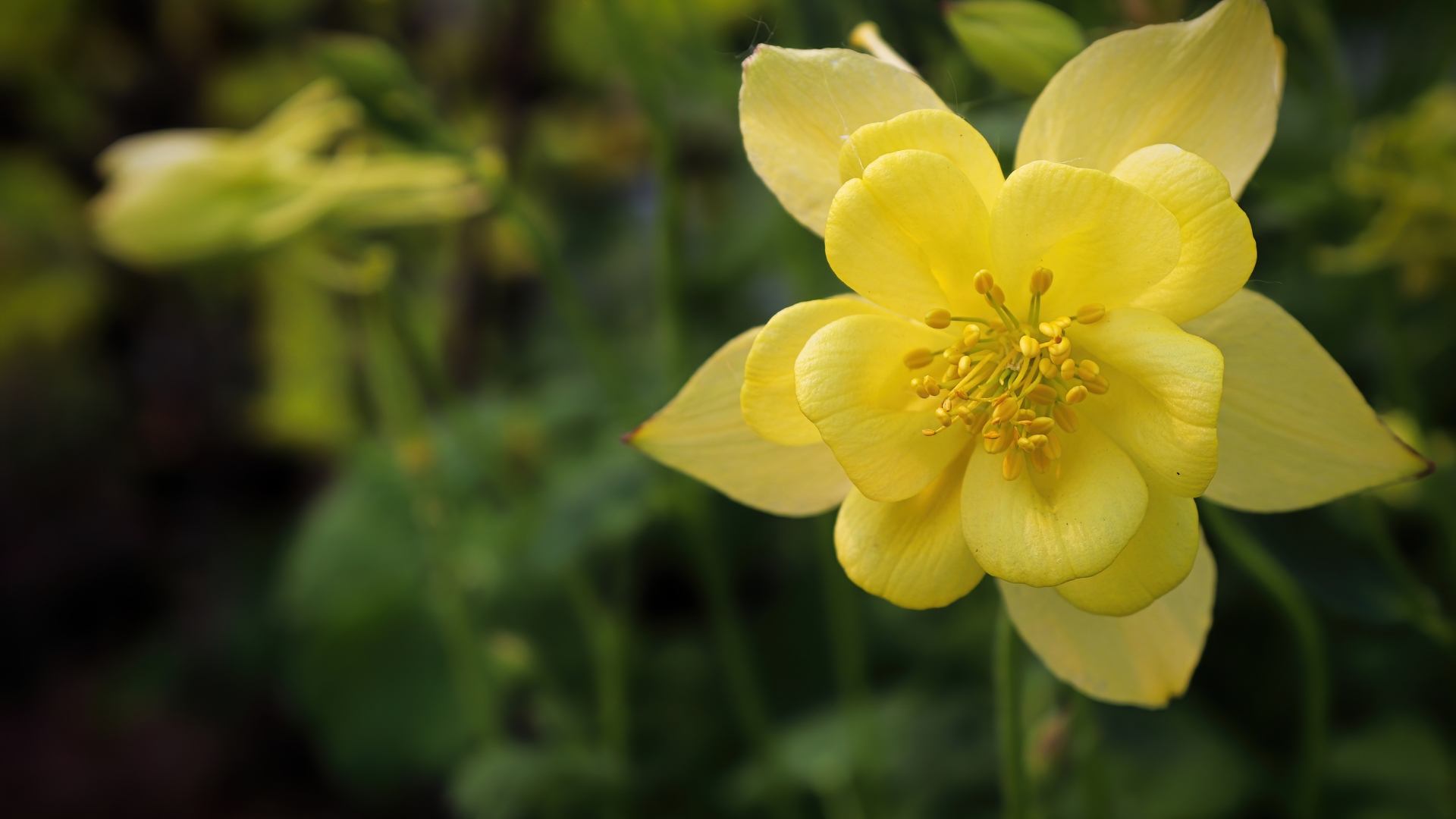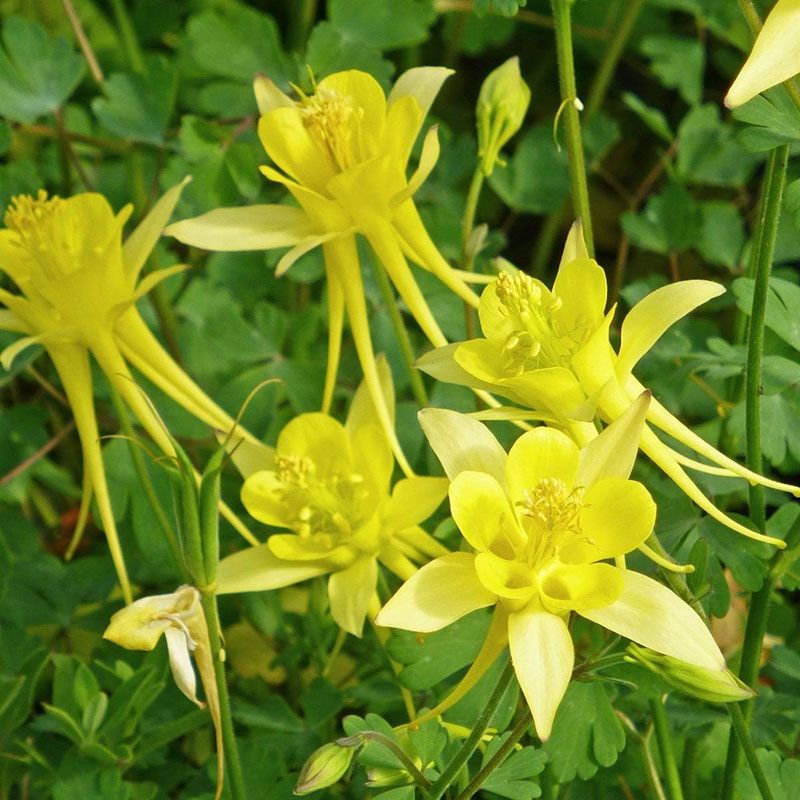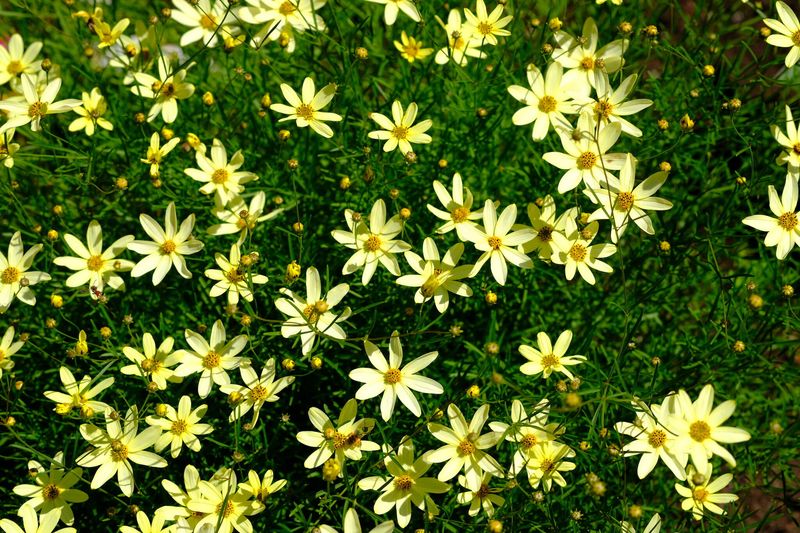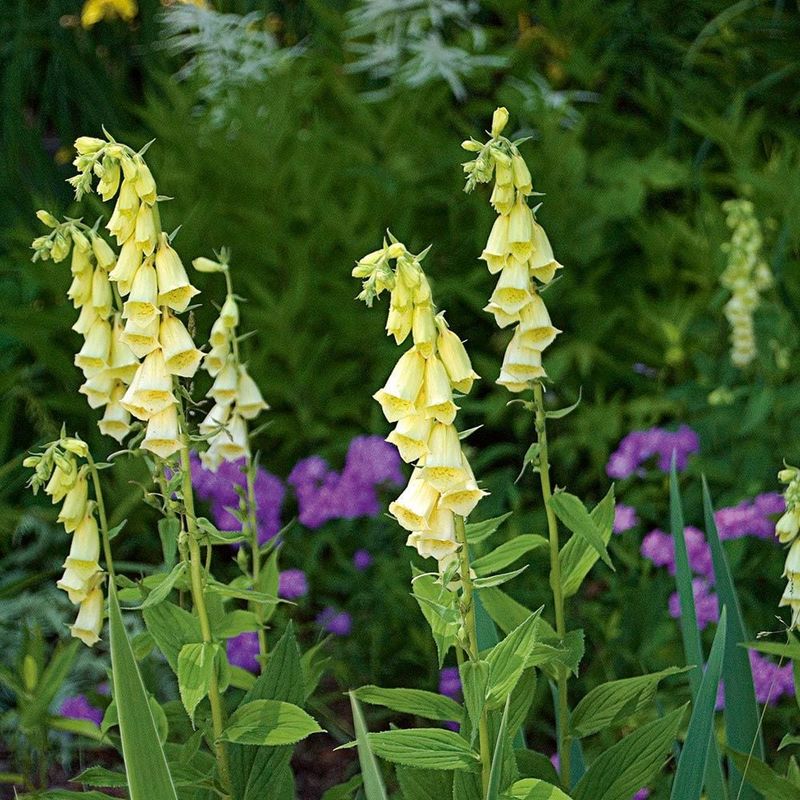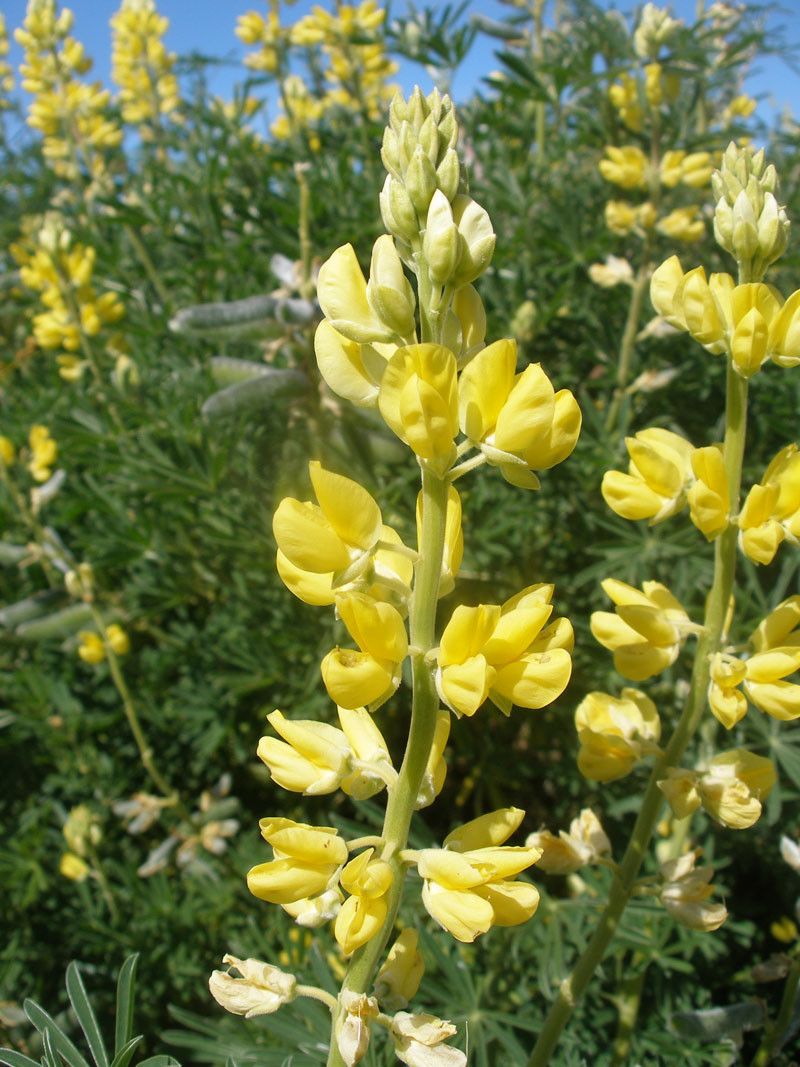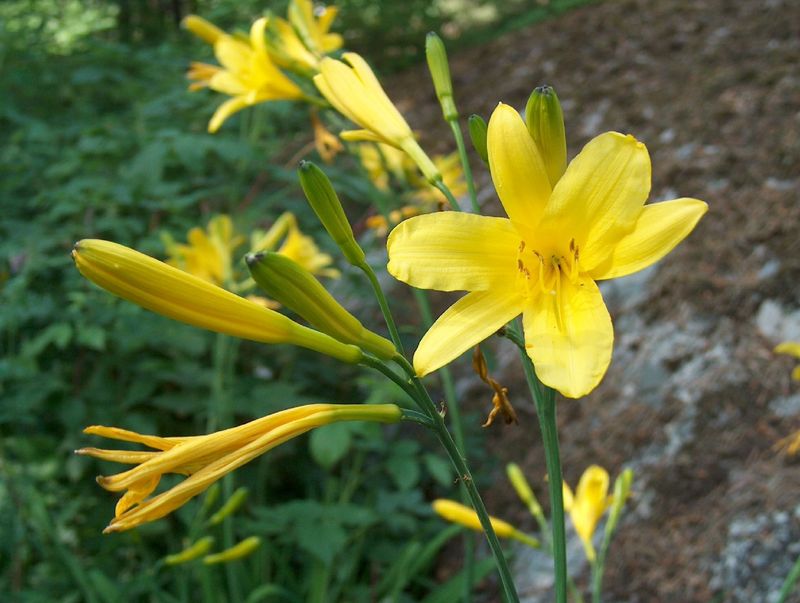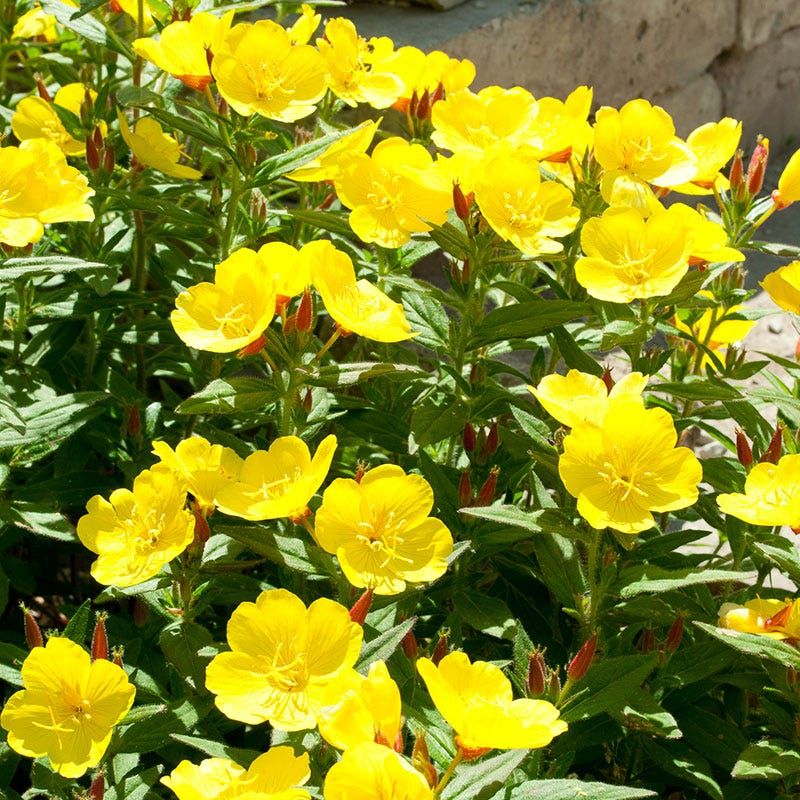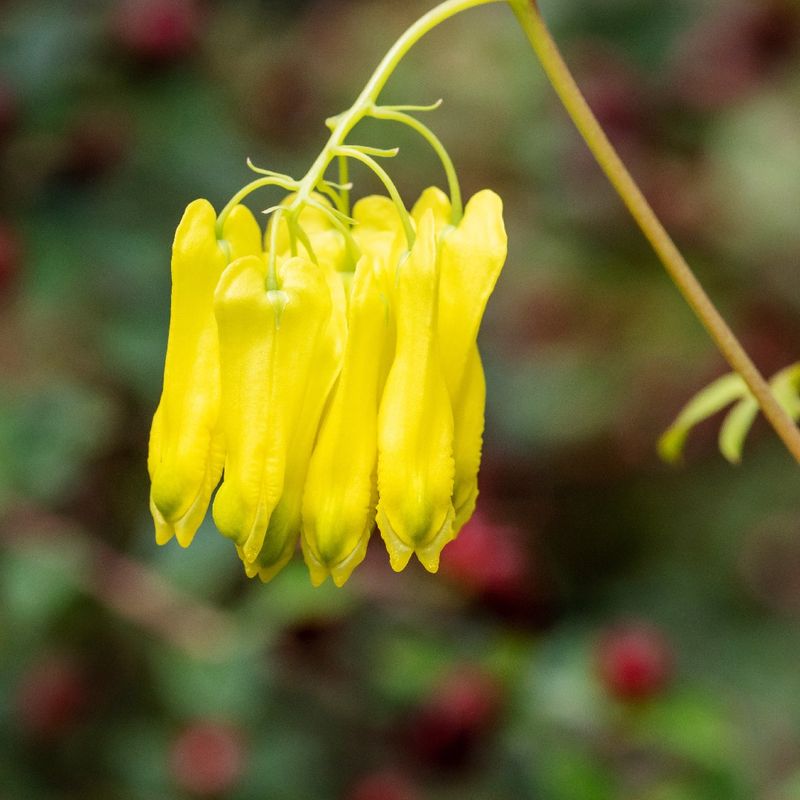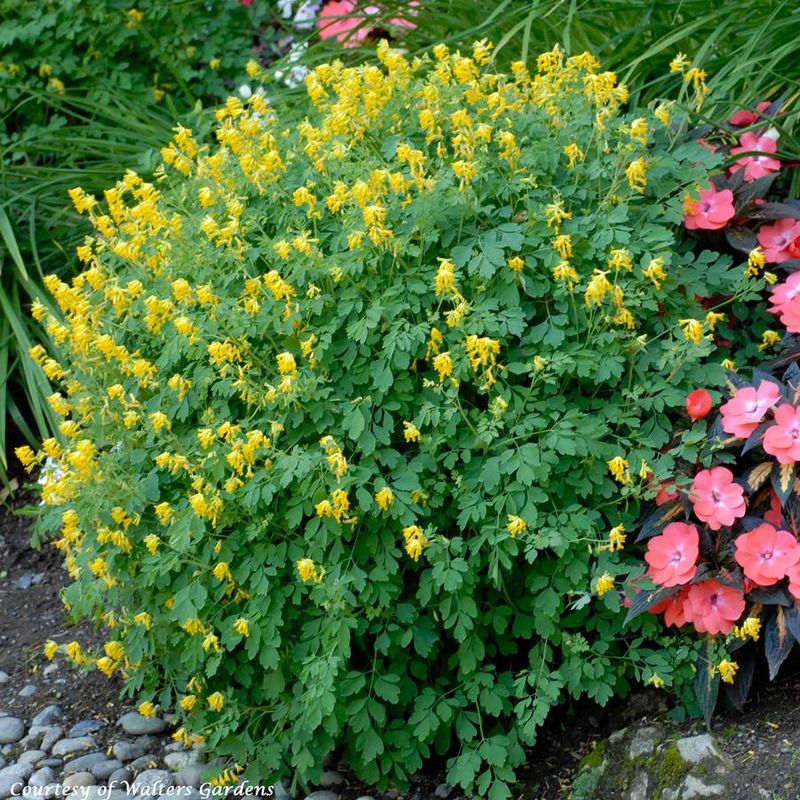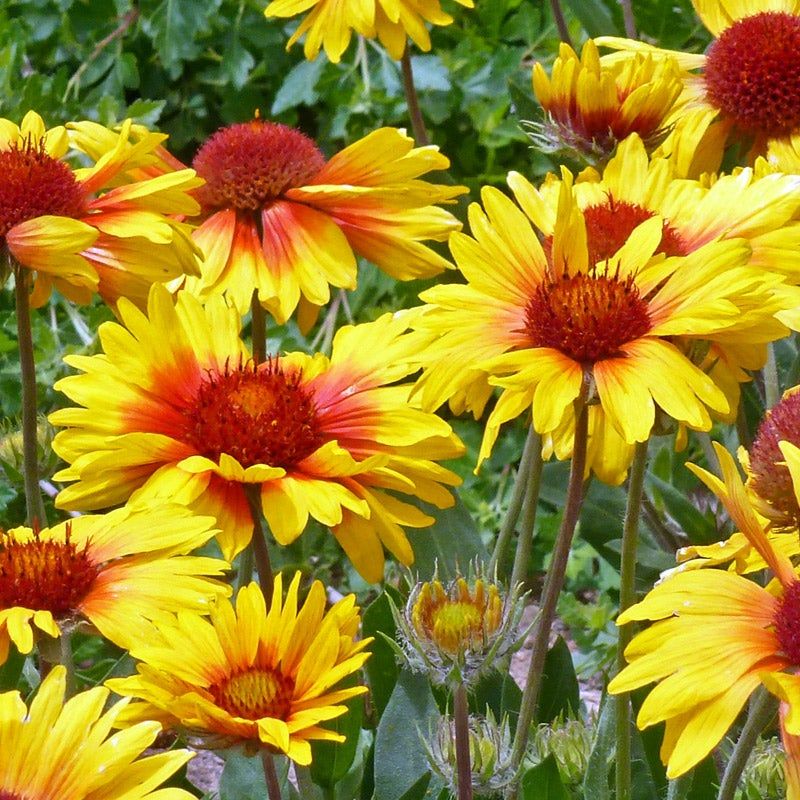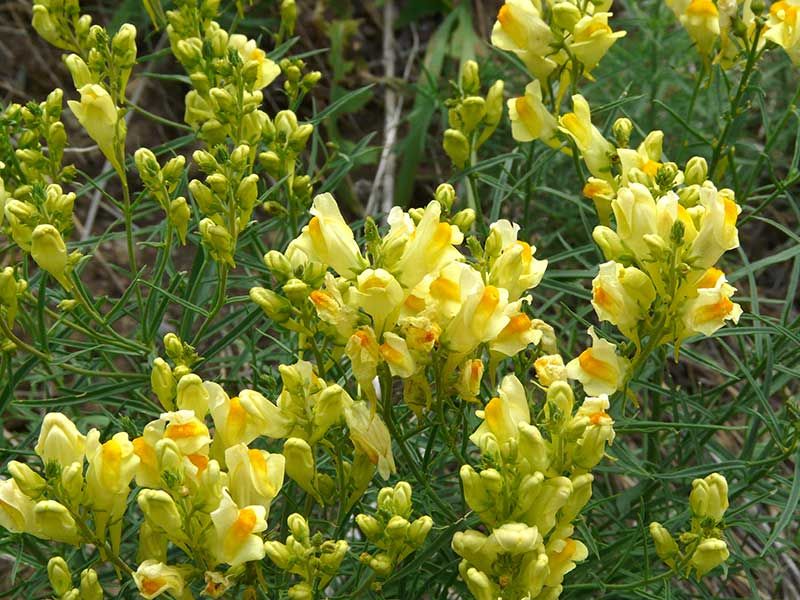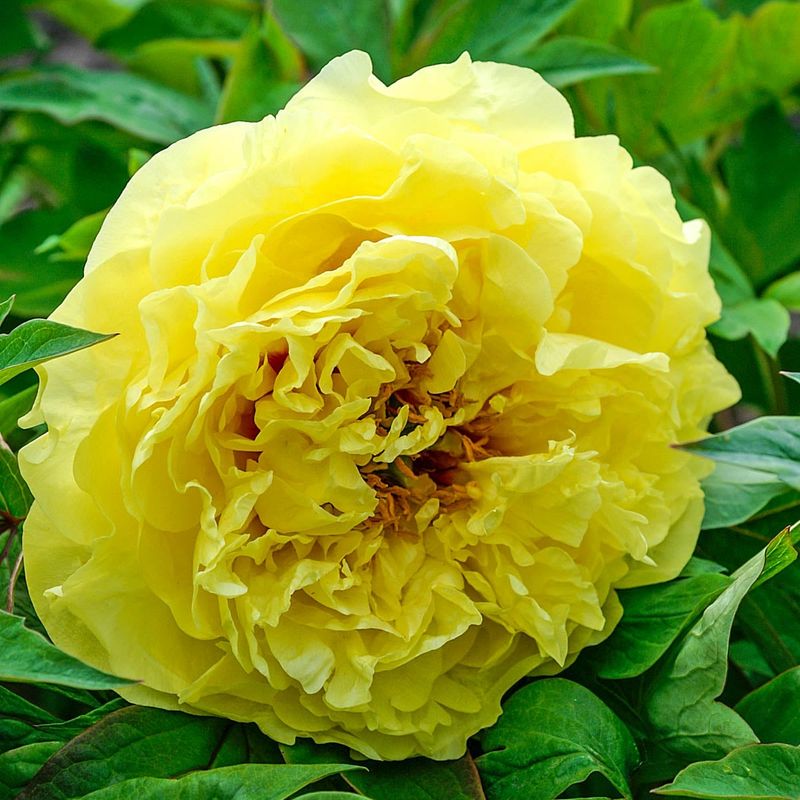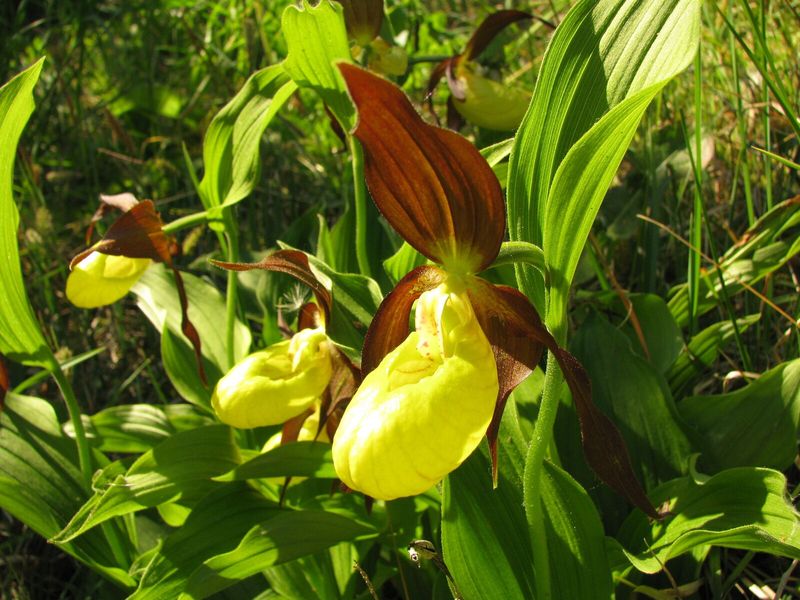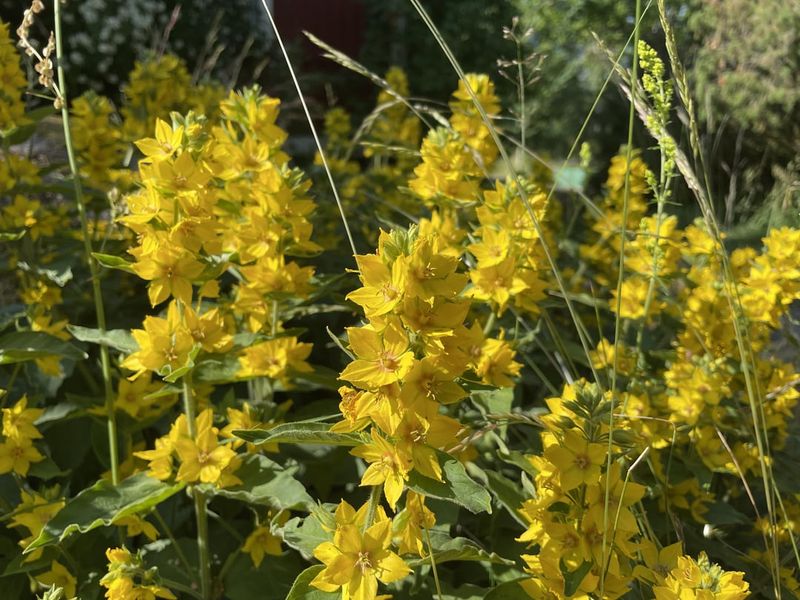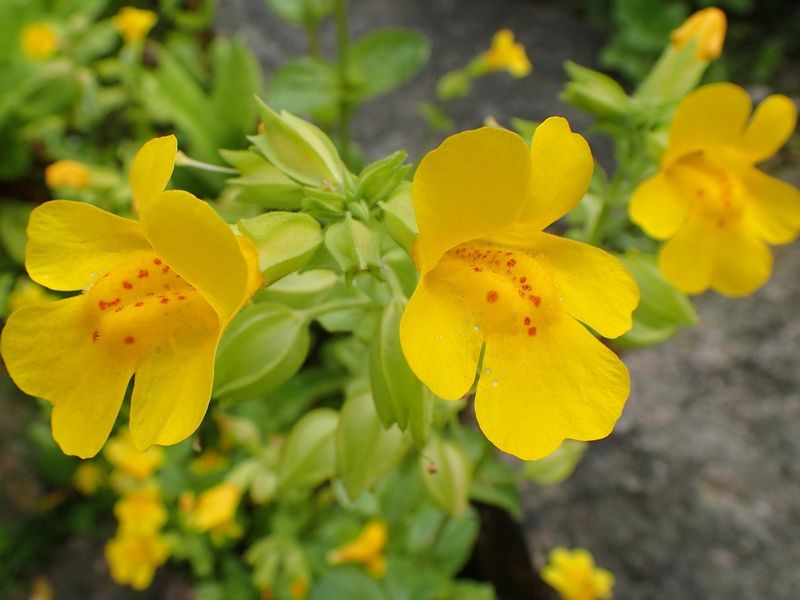Yellow flowering perennials add sunshine to gardens even on cloudy days. While these golden beauties promise to return year after year, many gardeners are surprised when some fade away sooner than expected. Certain yellow perennials struggle with disease, have naturally short lifespans, or simply can’t handle specific growing conditions.
1. Yellow Columbine (Aquilegia chrysantha)
Golden stars dancing on delicate stems, Yellow Columbine brings early summer magic to woodland gardens. Despite being officially classified as a perennial, many gardeners discover these cheerful plants gradually disappear after 3-4 years.
Self-seeding helps maintain their presence, but the original plants often decline due to leaf miners and powdery mildew issues. Cutting back foliage after flowering sometimes extends their lifespan.
Native to southwestern canyon habitats, they prefer partial shade and struggle in heavy clay soils. For best results, treat them as short-term perennials and allow seedlings to replace aging plants.
2. Coreopsis ‘Moonbeam’
Beloved for its clouds of soft lemon-yellow flowers, Coreopsis ‘Moonbeam’ initially dazzles gardeners with its prolific blooming from early summer through fall. The threadlike foliage creates an airy texture that complements other perennials beautifully.
Unfortunately, after 2-3 spectacular seasons, many gardeners notice their ‘Moonbeam’ plants developing dead spots in the center. This crown die-out is especially common in humid climates or with heavy winter moisture.
Division every two years helps prevent this decline, but even with perfect care, individual plants rarely remain vigorous beyond five years in most gardens.
3. Yellow Coneflower (Echinacea paradoxa)
Standing tall with golden petals that dramatically sweep backward from a prominent cone, Yellow Coneflower delivers prairie elegance to sunny borders. Unlike its purple cousin, this rare native species struggles to establish long-term garden residency.
Perfectly drained soil is absolutely essential – even one soggy winter can rot the crown. Gardeners in clay soil regions watch in dismay as plants slowly dwindle over 2-3 years.
Finicky about transplanting and division, Yellow Coneflower resents root disturbance. Seed-grown plants typically perform better than nursery divisions but still require perfect drainage and minimal competition to persist beyond a few seasons.
4. Yellow Foxglove (Digitalis grandiflora)
Soft buttery spires rising from rosettes of glossy leaves make Yellow Foxglove a refined woodland garden standout. While technically a perennial, this European native behaves more like its biennial cousin in most American gardens.
After a magnificent flowering season, plants often decline rapidly, especially in regions with hot, humid summers. The crown tends to rot in winter wetness, leaving gardeners disappointed by its brief performance.
Allowing plants to self-seed provides continuity in the garden, but don’t count on individual plants to grace your garden for more than 2-3 years. Southern gardeners particularly struggle to maintain this short-lived beauty.
5. Yellow Lupine (Lupinus arboreus)
Fragrant pea-like blossoms in brilliant sunshine yellow crown this California native shrubby lupine. Beach gardens and coastal landscapes benefit from its fast growth and nitrogen-fixing abilities that improve poor soils.
Despite woody growth suggesting permanence, Yellow Lupine typically burns out after 4-5 years even in ideal conditions. Sudden death syndrome frustrates gardeners when seemingly healthy plants collapse overnight during summer heat.
Root rot pathogens accumulate in the soil, making it difficult to grow replacement plants in the same location. Consider this spectacular flowering shrub a medium-term investment rather than a permanent garden fixture, especially in regions with summer humidity.
6. Yellow Daylily (Hemerocallis lilioasphodelus)
Sweetly scented with a pure lemon fragrance, the Lemon Daylily blooms earlier than most in the genus. Graceful arching stems carry trumpet-shaped blossoms above narrow, strappy foliage that forms attractive clumps.
While daylilies are known for incredible longevity, this particular yellow species gradually loses vigor. After about 5-7 years, flowering noticeably decreases as clumps become overcrowded and central growth dies out.
Division rejuvenates plants temporarily, but many gardeners report that even with regular maintenance, this heirloom yellow daylily never reaches the decades-long performance of its modern hybrid relatives. Consider it a medium-term perennial requiring regular renewal.
7. Yellow Evening Primrose (Oenothera fruticosa)
Cup-shaped golden blossoms that open in daylight (despite the name) make Sundrops a cheerful addition to sunny borders. The upright growth habit and manageable size prevent it from overwhelming neighboring plants.
Initial vigor misleads gardeners into believing these plants will be permanent fixtures. By year three or four, flowering typically diminishes dramatically while centers of clumps develop bare patches and woody stems.
Heavy clay soils accelerate decline, with plants literally rotting from the center outward. Southern gardens particularly challenge this plant’s longevity. Young divisions from the edges of established clumps perform better than aging original plants, suggesting regular renewal is necessary.
8. Yellow Bleeding Heart (Dicentra scandens)
Ferny foliage and quirky heart-shaped blooms in soft yellow make this climbing relative of the traditional bleeding heart a woodland garden treasure. Vining stems scramble through companion plants without becoming thuggish.
Gardeners quickly learn this Asian native lacks the staying power of its pink cousins. Even in perfect conditions with humus-rich soil and consistent moisture, plants frequently disappear after 2-3 seasons.
Winter wetness proves particularly deadly, causing crown rot that eliminates plants completely. Those in USDA zones 7-9 experience the greatest disappointment when this temperamental beauty vanishes. Consider it a short-term woodland accent rather than a permanent fixture.
9. Yellow Fumitory (Corydalis lutea)
Fountains of ferny blue-green foliage adorned with tubular yellow blooms make Yellow Fumitory a delightful addition to rock gardens and stone walls. Thriving in partial shade where it self-seeds freely, this European native creates charming colonies.
Individual plants rarely persist beyond 3-4 years, especially in regions with hot, humid summers. Sudden summer dormancy frequently alarms gardeners when plants disappear without warning during heat waves.
Fortunately, prolific self-seeding usually maintains the plant’s presence in gardens. However, those seeking neat, controlled plantings find this come-and-go habit frustrating. Consider it a short-lived perennial that requires seedling succession for continued presence.
10. Yellow Gaillardia (Gaillardia aristata)
Cheerful daisy-like flowers with rich yellow petals often ringed with red or orange make Blanket Flower a summer border standout. Drought tolerance and continuous blooming from June until frost initially impress gardeners seeking low-maintenance perennials.
Sadly, even with perfect drainage, most plants decline significantly after two or three seasons. Wet winter soils spell disaster, causing root rot that eliminates entire plants by spring.
Division rarely succeeds in rejuvenating established clumps. Most experienced gardeners treat Yellow Gaillardia as a short-term perennial, replacing plants every few years rather than expecting long-term performance. Self-seeding occasionally provides volunteer replacements in garden settings.
11. Yellow Toadflax (Linaria vulgaris)
Miniature snapdragon-like blooms in butter yellow with orange centers dance on slender stems above narrow, blue-green foliage. Cottage garden charm and extended summer flowering make Yellow Toadflax initially appealing to perennial gardeners.
Despite being technically perennial, individual plants typically exhaust themselves after 2-3 years of flowering. Their aggressive self-seeding often masks this short lifespan, as seedlings quickly replace declining parents.
This replacement habit becomes problematic in many gardens, earning Toadflax its alternate name “Butter-and-Eggs” and its reputation as a potential invasive in some regions. Consider this plant a short-term visitor that might overstay its welcome through prolific offspring rather than personal longevity.
12. Yellow Peony (Paeonia hybrid)
Sumptuous golden-yellow blooms with their intoxicating fragrance make yellow tree peonies and hybrid Itoh varieties the crown jewels of spring gardens. Their substantial price tags reflect both their breeding complexity and collector appeal.
While peonies generally live for decades, yellow varieties often underperform their pink and white cousins in longevity. Fungal issues like botrytis particularly target yellow varieties, causing gradual decline over 5-8 years.
Poor transplanting success frustrates gardeners attempting to relocate established plants. Even with perfect siting in well-drained soil with morning sun, many yellow peonies gradually diminish in flowering and vigor. Their spectacular but often brief garden performance makes them splurge plants rather than reliable heirlooms.
13. Yellow Lady’s Slipper Orchid (Cypripedium calceolus)
Exotic pouch-like blooms in luminous yellow make this native woodland orchid the holy grail for shade gardeners. Growing successfully from nursery-propagated plants (never wild-collected) brings immense satisfaction to patient gardeners.
Despite their perennial classification, Yellow Lady’s Slippers frequently disappear after a few seasons in cultivation. Even expert growers struggle to maintain specimens beyond 4-5 years, particularly in gardens with alkaline soil or inconsistent moisture.
Root disturbance from enthusiastic garden maintenance often contributes to decline. These temperamental beauties demand extremely specific conditions that few garden settings can maintain long-term. Consider success with these orchids a temporary triumph rather than a permanent garden feature.
14. Yellow Loosestrife (Lysimachia punctata)
Vertical wands of star-shaped golden flowers create dramatic summer impact in this European native perennial. Initially well-behaved and impressively robust, Yellow Loosestrife charms gardeners with its reliability and pest resistance.
The plant’s vigor masks a gradual quality decline that becomes evident around year four or five. Flowering diminishes while stems become increasingly woody and sprawling. The center of established clumps often dies out completely.
Division temporarily rejuvenates plants but vigorous spreading through underground runners creates maintenance headaches as plants age. Many gardeners ultimately remove older plants entirely when they become more troublesome than attractive. Consider this a medium-term perennial that requires regular management.
15. Yellow Monkey Flower (Mimulus guttatus)
Sprightly yellow blooms with ruby spotting bring creek-side charm to moist garden areas. This western native thrives along water features where its preference for consistently damp soil can be accommodated.
Though classified as perennial in its native riparian habitats, Yellow Monkey Flower behaves more like an annual or biennial in most garden settings. Plants typically flower magnificently for one season before declining rapidly, especially when summer heat intensifies.
Self-seeding helps maintain its presence, but individual plants rarely persist beyond two years even with ideal moisture. Eastern gardeners particularly struggle with its longevity. Consider this charming native a short-term investment that may occasionally perpetuate itself through volunteer seedlings rather than true perennial persistence.

